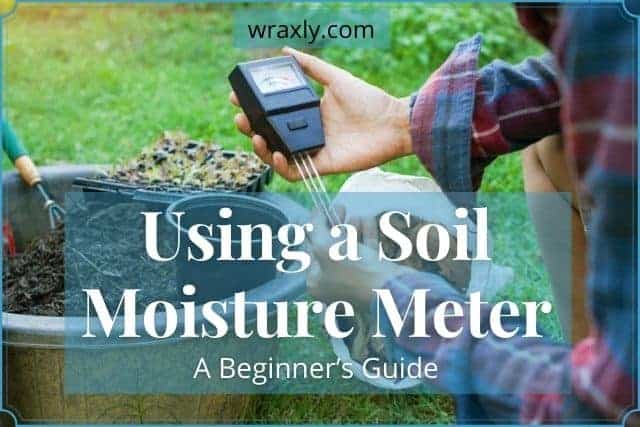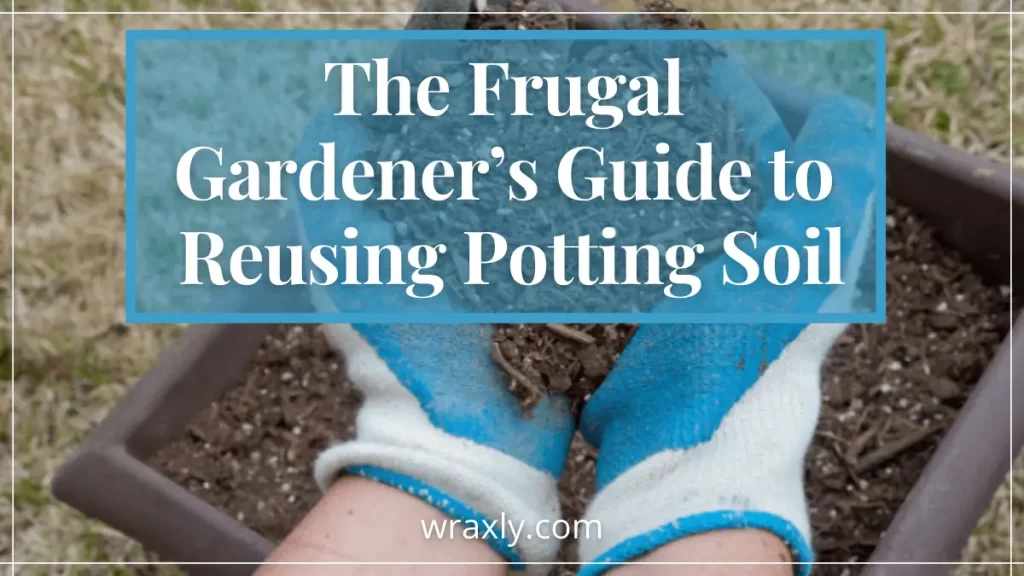With all of the helpful plant guides available to you, you might expect that watering your plants will be an easy task. However, giving your plants the correct amount of water at the proper time is more complicated than you might think. At times, you are left to wonder whether you are underwatering or overwatering your plants. Soil moisture meters are useful because they take away that guesswork. Thankfully, these meters are also easy to use, as this article will soon show you.

- How to Use a Soil Moisture Meter
- How to Shop for a Soil Moisture Meter
- The Best Soil Moisture Meters on the Market Today
- Best Overall: Primens Soil Plant Moisture Meter
- Best Budget: YITUOOW Soil Moisture Meter
- Best Simple Moisture Meter: Gouevn Soil Moisture Meter
- Best Smart: Rain Bird SMRT-Y Soil Moisture Sensor Kit
- Best Digital Display: Blumat Digital Soil Moisture Meter & Soil Moisture Sensor
- Best with Long Probe: XLUX Long Probe Deep Use Soil Moisture Meter
- Best for Compost: REOTEMP Garden and Compost Moisture Meter
- Soil Moisture Meter FAQs
How to Use a Soil Moisture Meter
At first glance, a soil moisture meter might seem like a complicated tool meant only for professionals. But nothing could be further from the truth. Many of these devices are incredibly straightforward. All you will need to do is follow the five simple steps below, and soon you’ll have no issue using your soil moisture meter to get a clear idea of how much water your plants need.
Insert the Meter into the Soil
Soil moisture meters come with a probe. The role of this probe is to measure the current moisture of the soil in which your plants grow. Begin by holding the probe vertically. Then insert it downward into the soil. In most cases, you should push the probe as deep into the soil as you can. That will give you the most accurate reading.
Read the Display
Once your probe is in the soil, you should wait about one minute to get a reading. After around 60 seconds has passed, look at the display attached to your soil moisture meter. Some displays will be more complex than others and will give you more information. At a minimum, soil moisture meter displays will include these three essential readings:
- Dry
- Moist
- Wet
Notice where the meter falls within that range. This will give you an idea of how much water your plant is currently receiving. But only after completing the next step will you know if that moisture level is acceptable.
Measure the Reading Against your Plant’s Needs
Each plant you grow has different soil moisture needs. If you use your soil moisture meter and find out that your soil is dry, it is natural to assume that you should give your plant more water. The reality is that that may not always be the case. While many plants require their soil to be moist rather than wet or dry, there are other plants that prefer their soil moisture to be at one of those extremes.
Before you make sense of your soil moisture meter reading, you need to know the specific needs of the plants you own. Study whether your plants prefer dry, moist, or wet soil. Then, if your soil moisture reading does not match that preference, it is time to adjust your soil moisture.
Apply Water as Needed and Recheck
Let’s assume that after your reading, you find that your plants are not getting the soil moisture they need. In those cases, it’s your job to alter those soil conditions to meet your plant’s requirements. For example, if your plant prefers dry soil, but your soil is moist or wet, you should forego watering for a while so that the soil can lose enough moisture to make your plant happy. If your plant wants moist or wet soil and you get a dry reading, it is time to give your plant more water.
In the latter case, you should soak your soil thoroughly. After that, let the soil sit for a minute or so before you use your soil moisture meter for another reading. Continue to adjust and apply water as needed until you reach a good level of soil moisture for your plants.
Clean and Store Your Moisture Meter
The final step in using a soil moisture meter is one of the most important of all. After you use your meter, you need to spend some time cleaning and storing it properly. The soil and moisture that your probe contacts can be detrimental to its longevity. When left unclean, the probe will lose its integrity quickly.
To avoid that problem, be sure to wipe your probe after each time you use it. After performing that cleaning task, you should store your soil moisture meter in a reliable container and put it in an area where it will not receive damage. Through that cleaning and storage approach, you can rely on your soil moisture meter for years to come.
How to Shop for a Soil Moisture Meter
As you can see, using a soil moisture meter is not challenging at all. However, shopping for one can be. With so many options on the market, it is difficult to choose the best soil moisture meter for you. If you’re interested in shopping for one of these items, you’ll need to know what to look for. The sections below will show you a few of the most important considerations when buying a soil moisture meter.
Digital vs. Analog
One of the first evaluations you should make when shopping for a soil moisture meter relates to the display. The display of your meter is important because that is where you will receive readings indicating the moisture of your soil. In most cases, the display on your soil moisture meter will either be digital or analog.
Analog displays are incredibly common and are equally easy to read. These displays typically consist of a physical meter like the ones that indicate speed and fuel levels on a car’s dashboard. The benefit of these displays is that they are straightforward and give a quick reading. Digital displays are often capable of sharing more information but can also be somewhat less intuitive when it comes time to take a reading.
Materials and Durability
Although you won’t be using your soil moisture meter to aid you in any heavy labor, there is still a significant possibility that your meter will break down after prolonged use. In fact, that process of degradation can happen surprisingly quickly, especially if you neglect the final step of our guide on how to use one of these tools. For that reason, it is essential that you find a meter with reliable construction.
The biggest threat to your soil moisture meter is the fact that it will come in regular contact with water and soil. Those materials and the substances within them can be harmful to your meter’s metal pieces. Water alone has a slightly corrosive effect on metal. As you shop, you should favor products that have sturdy materials and those that have a corrosion-resistant composition.
Additional Readings
An understanding of soil moisture is not the only insight you can gain from using a soil moisture meter. Today, there are many soil moisture meters that will give you additional readings. Many of these options advertise themselves as having a capacity to provide these three measurements:
- Soil moisture
- Soil pH level
- Sun exposure
As you may know, moisture, acidity, and sun exposure are three essential factors to a plant’s growth, and each plant will need a varying degree of each one. Therefore, having a soil moisture meter that can also measure pH and sun exposure will give you a 3-in-1 reading that will put you one step closer to having a comprehensive understanding of what your plants need.
The Best Soil Moisture Meters on the Market Today
Now that you know how to use a soil moisture meter, it’s time to shop for one. There are many different factors to consider when making this purchase, so it can be helpful to know about a few of the top products before your search. The list below shows our picks for the best soil moisture meters in several different categories:
Best Overall: Primens Soil Plant Moisture Meter
Best Budget: YITUOOW Soil Moisture Meter
Best Simple Moisture Meter: Gouevn Soil Moisture Meter
Best Smart: Rain Bird SMRT-Y Soil Moisture Sensor Kit
Best Digital Display: Blumat Digital Soil Moisture Meter & Soil Moisture Sensor
Best with Long Probe: XLUX Long Probe Deep Use Soil Moisture Meter
Best for Compost: REOTEMP Garden and Compost Moisture Meter
Soil Moisture Meter FAQs
Let’s conclude this article with some additional information on soil moisture meters. Below are some answers to the most common questions gardeners have about these tools and how to use them.
High-quality soil moisture meters are often highly accurate. In many cases, these tools can give a soil moisture reading that is accurate within a 1% of your soil’s actual moistness. Meters with this degree of accuracy are widely available to nearly anyone who wishes to use them.
One of the best aspects of a soil moisture meter is that you won’t need to wait long for it to work. Typically, your meter will present an accurate reading within about 60 seconds after entering the ground. That expedience makes these tools useful to anyone who is trying to improve their watering habits.
Many standard soil moisture meters are not exceptionally expensive. That affordability means that these tools are well worth the price when you consider the vital role they can perform. However, what you should know is that the cheapest soil moisture meters are often the least accurate. That’s why it is important to consider both the price and the quality of a soil moisture meter before you make a purchase.
You may also be interested in… Popcorn Plant: The Surprising Facts You Need to Know

John Haryasz is a freelance writer and landscape designer. In the field of landscape architecture, he has contributed to many successful design projects throughout the country. As a writer, John specializes in creating captivating and informative web content. Through that work, he aims to share his design knowledge and promote engagement with the outdoor world.



![10 Common Container Garden Mistakes to Avoid [Beginner’s Guide]](https://wraxly.com/wp-content/uploads/2021/02/10-Common-Container-Garden-Mistakes-to-Avoid-Beginners-Guide-1200-1024x576.webp)